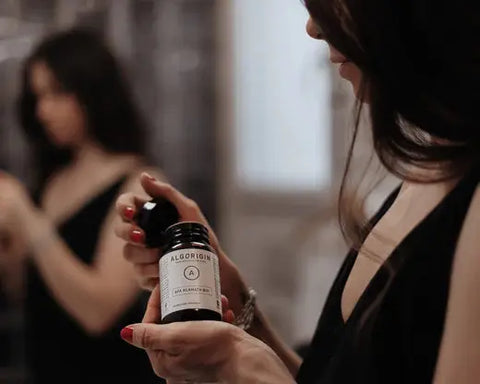What is astaxanthin?
Astaxanthin is a red pigment belonging to the family of antioxidants. To be more precise, it is a polyphenol classified as a xanthophyll carotenoid.
It is found in shellfish, shrimp, lobsters, some wild fish as well as in the flesh of certain animals and also in plants with a red coloring.
Astaxanthin is surrounded by a protein that will only be released under the effect of heat; This can be seen by experimenting with cooking shellfish. Shrimp turn pink under the effect of heat, at the time of cooking. It is the astaxanthin contained in the shrimps which gives them this color.
Contained in the flesh of wild salmon, it gives it the strength to take on the feat of swimming up rivers against the current, in order to reach an area suitable for reproduction.
Astaxanthin is also present in large quantities in the algae Haematococus pluvialis. It will give a pinkish-red color to fish that eat it.
Astaxanthin pigment: natural or chemical?
We are talking about natural astaxanthin here, but let's be careful because a chemical and synthetic form also exists. This pigment manufactured by the petrochemical industry, has a much lower interest than that of natural pigment.
The world-famous red pigment
Asians and Americans have been big consumers of the pigment astaxanthin for a long time.
Top athletes in the United States and movie stars recommend the pigment for its effects. Many American brand ambassadors talk about astaxanthin.
Some cosmetic creams also incorporate the pigment into their compositions.
Still little known in Europe, we can see, however, that interest has been growing strongly in recent years when we take into account the results of studies carried out and when we question people who regularly take cures and who share their experience.
The benefits of the pigment astaxanthin
THE benefits of astaxanthin are numerous and remarkable. They are due to the presence of Vitamin E, which helps protect cells against oxidative stress.
Oxidative stress or oxidation is due to the creation of free radicals. It is the source of cellular aging and results in the appearance of genes, pain, inflammation, or age-related pathologies (AMD, etc.).
Who can take an astaxanthin cure?
The pigment astaxanthin is of interest to everyone and more particularly to people who want to age well athletes who work intensively on an outdoor playing field…
This pigment in its natural form, that is to say from the algae Haematococus pluvialis, containing vitamin E is a recommended solution for people who seek to protect their organs naturally against the risk of oxidation.
There are no contraindications, toxicity or known side effects when taking astaxanthin. The 1 to 3 month treatment can be repeated.
Some brands recommend an average of 2 capsules/day for 2 months.
Studies show results from a consumption of 4mg per day of astaxanthin.
Soluble in fats, it is best to take the capsules during a meal to make the pigments more assimilable and thus benefit even more from the benefits.
Who can take an astaxanthin cure?
L' organic astaxanthin has an interest for everyone and more particularly for people who are concerned about ageing well athletes who play intensively on an outdoor playing field people who are sensitive to the sun and who suffer from sun allergies every summer people who work for long periods on screens and who suffer from visual fatigue and dry eyes, etc.
This pigment in its natural form, that is to say derived from the algae Haematococus pluvialis, is a recommended solution for people seeking to protect their organs naturally against the risk of oxidation. :
- The brain
- The eyes
- The skin
- The joints
There are no contraindications, toxicity or known side effects when taking astaxanthin. The 1 to 3 month treatment can be repeated.
Some brands recommend an average of 2 capsules/day for 2 months.
Studies show results from a consumption of 4mg per day of astaxanthin.
Soluble in fats, it is best to take the capsules during a meal to make the pigments more assimilable and thus benefit even more from the benefits.


